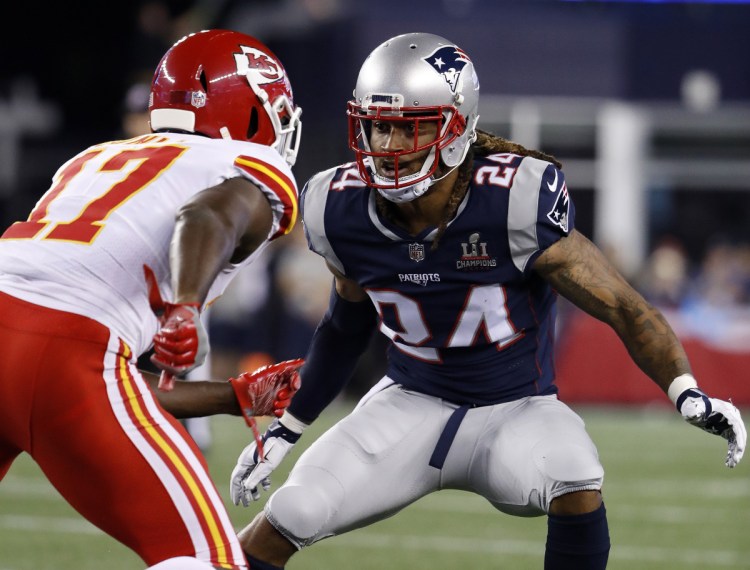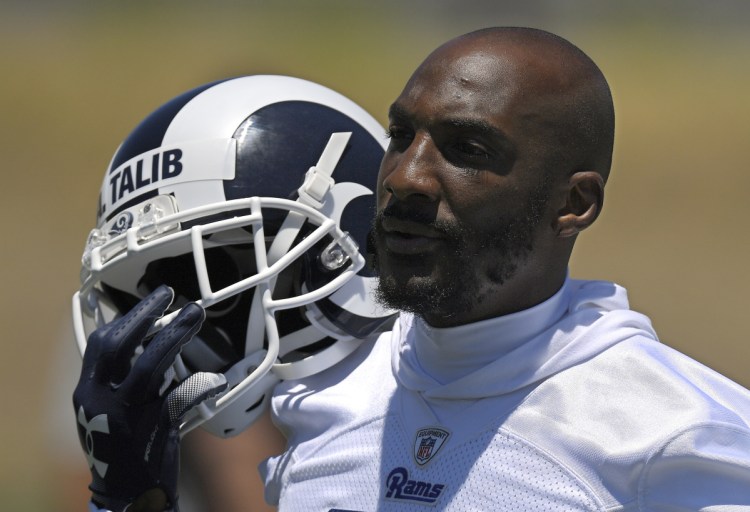ATLANTA — The New England Patriots have spent two decades continually replenishing a Super Bowl-caliber roster.
The Los Angeles Rams have been at it for two years.
The rapid ascension of the Rams franchise is not uncommon in the NFL, where contenders emerge from obscurity and then fade within a few seasons. That’s the cycle.
But given the depths to which they plunged just two seasons ago, the fact that the Rams are representing the NFC in Super Bowl LIII is still a stunning development.
Consider the last meeting between the Patriots and Rams on Dec. 4, 2016. It was one of the most lopsided games of the past decade. Rookie quarterback Jared Goff looked terribly outmatched. Each handoff for Todd Gurley was a struggle to return to the line of scrimmage. The Rams compiled 71 yards in the game’s first 58 minutes. A 66-yard bomb from Goff to Kenny Britt at the 2:00 mark saved the Rams from a historically pathetic offensive performance.
They’ve gone from 4-12 in 2016 to 11-5 a year ago to 13-3 this season, now with a chance to knock out the Pats in the Super Bowl.
So how did both teams get here?
In assembling Super Bowl rosters, the front offices in New England and Los Angeles took radically different paths.
The Rams rolled the dice with an all-in play for 2018 and 2019. They were hyper-aggressive last offseason, trading for cornerback Marcus Peters, cornerback Aqib Talib and wide receiver Brandin Cooks. They also shelled out $14 million for one year of Ndamukong Suh. They remained a buyer at the trade deadline, parting with a 2019 third-round pick and a 2020 fifth-round selection for enigmatic edge rusher Dante Fowler Jr., who has been dominant down the stretch.
The five players combined for a 2018 salary-cap hit of $34.5 million.
Outside of the Stephon Gilmore signing ($65 million over five years), which turned out to be the franchise’s most critical acquisition in years, the Patriots rarely pay outside contributors.
Of the seven highest cap hits on the team, Gilmore was the only one who wasn’t drafted by New England.
The Patriots built their roster mostly with middle-class contracts. They have 19 players with cap hits ranging from $2 million to $4 million. The Rams, meanwhile, have only four players in that tier.
The Rams are the rare example of the NFL SuperTeam that actually panned out. Remember the 2011 Eagles? They went wild in free agency, acquiring high-profile veterans in Nnamdi Asomugha, Dominique Rodgers-Cromartie, Jason Babin, Ronnie Brown, Vince Young, Cullen Jenkins and Evan Mathis.
They went 8-8 and eventually got Andy Reid fired.
Because the Rams have a quarterback on a rookie contract, they could afford to take big short-term swings at other positions. The bet is simple: When Goff is due for an extension, the Rams will probably be ready to move on from high-priced veterans like Suh and Talib. Their departures will free up some money. The team also must deal with escalating contracts of Aaron Donald, Todd Gurley and Cooks.
Like the Patriots, the Rams weren’t shy about trading draft picks. They ponied up a first-rounder for Cooks in the spring. They’re without a second-round pick (Peters trade) and their third-round selection (Fowler trade) this year. They’re banking on the compensatory pick formula to help. The Patriots and Rams are the only two teams in the NFL projected to receive two comp picks in the third round, according to OverTheCap.com.
In 2018, the Patriots ranked in the top 10 of positional spending at running back (ninth), tight end (first), and safety (second), according to OverTheCap.com. The Rams ranked in the top 10 at running back (fourth), defensive line (seventh), safety (ninth), and cornerback (ninth).
Both teams were in the middle of the pack in spending at linebacker and wide receiver. The Rams invested very little in the tight end position.
The Patriots’ offensive line, arguably the best position group on the team, provided incredible bang for its buck. Only three teams – the Cardinals, Giants, and Bills – spent less on the big fellas up front. Four of the five starters on the New England offensive line are homegrown talents. The other, Trent Brown, was a bargain acquisition.
The Rams acquired three of their five starters on the O-Line from the outside, and spent significant cap space on left tackle Andrew Whitworth and center John Sullivan. Both players are in their mid-30s. They’ll need to re-tool in the near future.
Yes, there’s uncertainty with both the Patriots and Rams going forward. Both rosters need infusions of young, cheap talent within the next few years. But that’s all to be sorted out later.
For now, the Patriots and Rams are proof that there’s more than one way to get the job done.
Send questions/comments to the editors.




Success. Please wait for the page to reload. If the page does not reload within 5 seconds, please refresh the page.
Enter your email and password to access comments.
Hi, to comment on stories you must . This profile is in addition to your subscription and website login.
Already have a commenting profile? .
Invalid username/password.
Please check your email to confirm and complete your registration.
Only subscribers are eligible to post comments. Please subscribe or login first for digital access. Here’s why.
Use the form below to reset your password. When you've submitted your account email, we will send an email with a reset code.